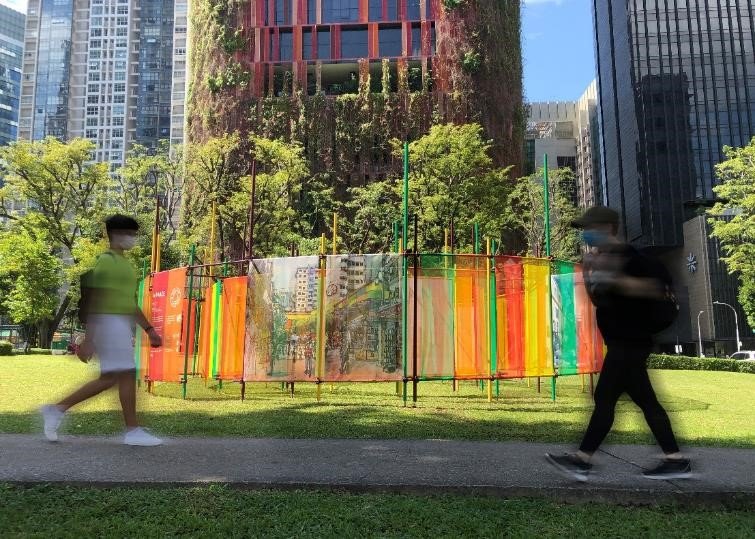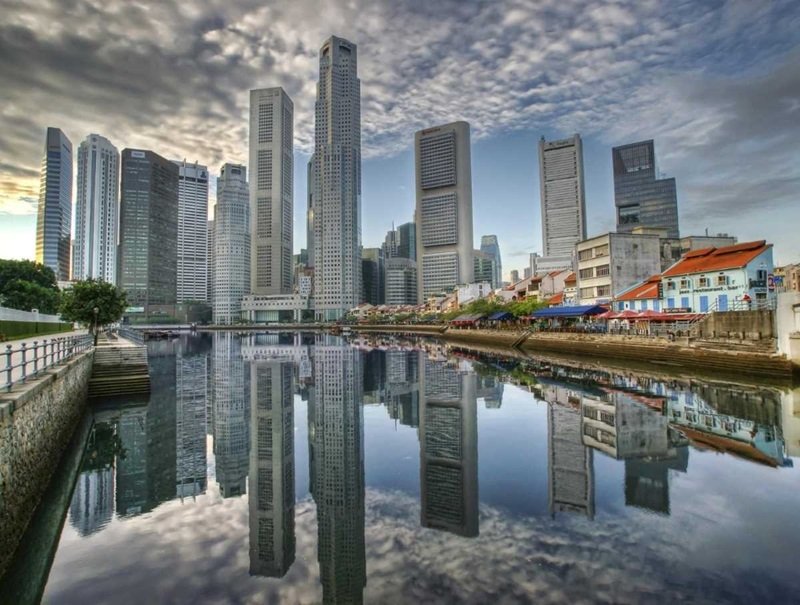It’s easy to measure the liveability of a city – in Singapore for instance, access to the transport system, amenities, healthcare, and green spaces are all considerations that come into play. But the question of loveability is a more complex one that goes beyond the tangible – how can a city instil a deep sense of belonging, ownership, and pride in its residents for their neighbourhoods and communities?
Community-led placemaking
Placemaking empowers people to play a part in city making, creating shared experiences and memories. This can be as simple as someone placing a chair in front of their shop and inviting a neighbour to sit, chat and watch television, turning the space into a delightful space for social interaction.
On a precinct level, community-led placemaking can be incredibly powerful in instilling a sense of belonging. Just last year during Ramadan at Kampong Glam, a heritage precinct and cultural centre of Singapore’s Malay-Muslim community, the Kampong Glam Business Association organised an event inviting friends and families who have since moved out of the area to come back to break fast together.
The streets were closed for the event, shopkeepers rolled carpets out onto the streets, and everyone had a good time catching up, laughing, and feasting.
 (Image: One Kampong Gelam, photos were taken before COVID-19 measures)
(Image: One Kampong Gelam, photos were taken before COVID-19 measures)
It was an inspiring night – it was clear to us that people came together to celebrate their love for the space and community. When people feel loved by the city, they will love the city back.
“It was clear to us that people came together to celebrate their love for the space and community. When people feel loved by the city, they will love the city back.”
Inclusive public spaces
Well-loved public spaces create delightful opportunities for social gathering in our city. They encourage people to linger and interact with one another, and are especially meaningful when created and shaped by communities who use the space.

A colourful art installation at the open green – Wander in and discover the surrounding neighbourhoods of Tanjong Pagar and Chinatown through sketches by a local community of artists.
Within Singapore’s Central Business District (CBD) is an open turf in the centre of Tanjong Pagar, where we collaborated with stakeholders from the area to introduce moveable chairs and a maze installation to the space to express their creativity or simply to gather in groups.
A few days into the installation, we noticed that people were picking up the chairs and re-arranging them. Sometimes the chairs would be dotted around the space in pairs or small groups. Once, we even saw them arranged in a boardroom-type setting. More recently, just before safe measures were imposed nationwide due to COVID-19, we found the chairs spaced at least 1 meter apart, under the cooling shade of trees.
Giving people an avenue to activate and interact with public spaces can strengthen their sense of ownership and emotional connection to their precincts, while adding an element of surprise and spontaneity to the city.
 Moveable chairs in various arrangements on the open green beside Tras Link Park. (Photos were taken before COVID-19 measures)
Moveable chairs in various arrangements on the open green beside Tras Link Park. (Photos were taken before COVID-19 measures)
Giving people an avenue to activate and interact with public spaces can strengthen their sense of ownership and emotional connection to their precincts, while adding an element of surprise and spontaneity to the city.
Sustainable conservation
We also all love having a sense of familiarity, and in a city, it is powerful to have us walk through or recall the stories of the same places our parents visited as children, and to also share these memories with our future children.
People often think that conservation is about preserving the past. It’s also about the future – keeping something from today for tomorrow’s generation. Our built heritage tells the story of our nation’s history and progress, and gives us a sense of identity on both a personal and city level.

CBD skyscrapers juxtaposed with conserved shophouses along Singapore River tell the story of our nation’s progress and resilience.
URA has a conservation programme that is only 30 years old. But we are proud to have conserved over 7,200 heritage buildings throughout Singapore’s development. The view of conserved shophouses along Singapore River juxtaposed against CBD skyscrapers in the background has become an iconic image for Singapore. The contrast of new and old reminds us of where we have come from, the progress that we have made as a city, and the progress that will continue to be made.
Through such stories and shared memories, our built heritage connects the individual to the city, and bridges the physical landscape with an intangible but crucial emotional connection.
Our built heritage connects the individual to the city, and bridges the physical landscape with an intangible but crucial emotional connection.
In conclusion, there is no simple answer to define loveability, but at its core it is about planning a city for the people – creating and sustaining emotional attachment to the city through taking ownership in the city’s development, supporting the community during times of crisis, and feeling a sense of identity and home in the city.
We would love to hear from you. What are some of your favourite places in Singapore, and what does an ideal Singapore look like to you? Let us know through the Loveable Singapore Project.
Source: https://www.ura.gov.sg/Corporate/Resources/Ideas-and-Trends/Home-truly




